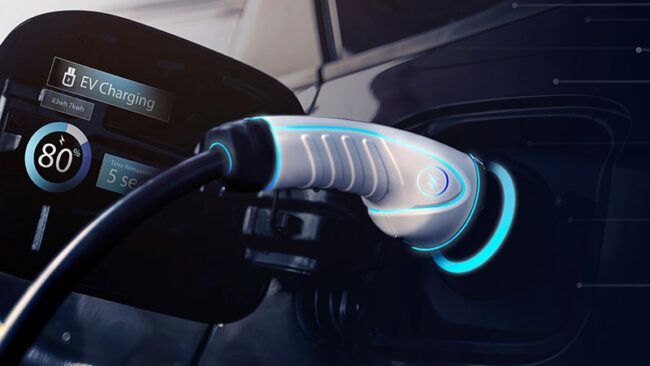Stay connected
Subscribe to our fleet blog and follow us on social media to receive all our fuel and energy industry insights.

About 6 in 10 Americans live within 2 miles of an electric vehicle public charging station, according to the Pew Research Center. And as of February 2024, there are over 61,000 public charging stations across the U.S.
Electric vehicle (EV) charging accessibility is growing, pushing the EV transition within reach for many businesses.
For fleet managers, electric vehicles present a unique opportunity to reduce emissions, lower operational costs, and contribute to a sustainable future. However, one of the primary challenges that comes with this transition is the accessibility of charging stations while on the go, especially during long routes.
This is where services, such as WEX’s EV En Route tool, come into play, offering comprehensive electric vehicle charging, payment, and management solutions that help keep your commercial vehicles powered and operational on the road. WEX EV En Route simplifies public charging through innovative payment and reporting functions giving managers clear insights into driver behavior, charging patterns, and more.
In 2020, the Department of Energy reported nearly 29,000 public charging stations nationwide. As of February 2024, that number has more than doubled to 61,000. For reference, there are currently around 145,000 traditional fueling stations nationwide.
According to the Pew Research Center, the majority of EV charging stations are located around major hub cities. As of June 2024, California has 46,205 public chargers. New York has the second most with 12,091 public charging stations.
EV charging stations are located in two-thirds of all U.S. counties, which include 95% of the U.S. population.
The U.S Department of Transportation lists three types of EV chargers:
Level 1, 2, and 3 (DC fast chargers)
According to Bloomberg, the U.S. government is investing in the development of EV infrastructure to eliminate charging hurdles. The National Electric Vehicle Infrastructure program – a $5 billion plan to address gaps in charging availability – has helped add more Level 3 fast chargers to the landscape. During the first quarter of 2024, public fast-charging stations in the U.S. increased by 7.6%, bringing the total number to 8,200 nationwide.
WEX EV En Route offers a range of features that simplify the complexities of public charging:
To access WEX’s public charging network, drivers can use the DriverDash app – a user-friendly app that simplifies the charging or fueling process – or the WEX EV RFID card. DriverDash, which can also be used by drivers of gas-powered vehicles to find and pay for gas, provides real-time information on and directions to nearby available charging stations, and allows drivers to initiate a charging session.
With the DriverDash app and RFID card, WEX EV En Route uses WEX’s proprietary closed-loop payments network to help ensure secure transactions and provide fleet managers with detailed insights into charging behavior, driver identification, and vehicle mileage.
DriverDash is accepted at a growing network of accepting charging locations, including ChargePoint, EVConnect, EVGo, FLO, AmpUp, and Blink.
Managers should take into account the locations of charging stations, estimated charging times, and the specific range capabilities of each EV in their commercial vehicle fleet. Using the DriverDash app helps drivers avoid running out of power mid-route. This enhances vehicle reliability and reduces the risk of disruptions in the workday.
Cost management with EV charging can be complex, but WEX EV En Route simplifies the process of managing a mixed-energy fleet, with one credit line, one invoice, and one set of reports for all of your charging and fuel purchases. It also provides insights into charging costs across different stations and times, allowing managers to strategically pick stations for cost and time efficiency.
Learn more on how WEX EV En Route can benefit your fleet.
Along with EV En Route, WEX offers other innovative solutions to meet your EV business needs:
WEX EV At-Home is the cutting-edge solution to charging your EV at home. It automates reporting and charging reimbursement to any organization where employees bring their EV home at night. Charging at home, overnight is also the most cost effective solution, according to AAA.
WEX EV Fleet Converter helps businesses transition their fleets to electric vehicles with ease, offering tools to understand the feasibility, costs, and benefits of adopting EV.
To learn more about EV solutions and mixed fleets, visit:
To learn more about WEX, a dynamic and nimble global organization, please visit our About WEX page.
To learn more about WEX’s EV offerings visit our EV page.
All fleet cards are not the same, and different types of fuel cards suit the needs of different kinds and sizes of businesses. View WEX’s fleet card comparison chart to see which fleet fuel card is right for you.
Sources:
Department of Energy
American Automotive Association (AAA)
U.S Department of Transportation
Pew Research Center
Bloomberg
Subscribe to our fleet blog and follow us on social media to receive all our fuel and energy industry insights.